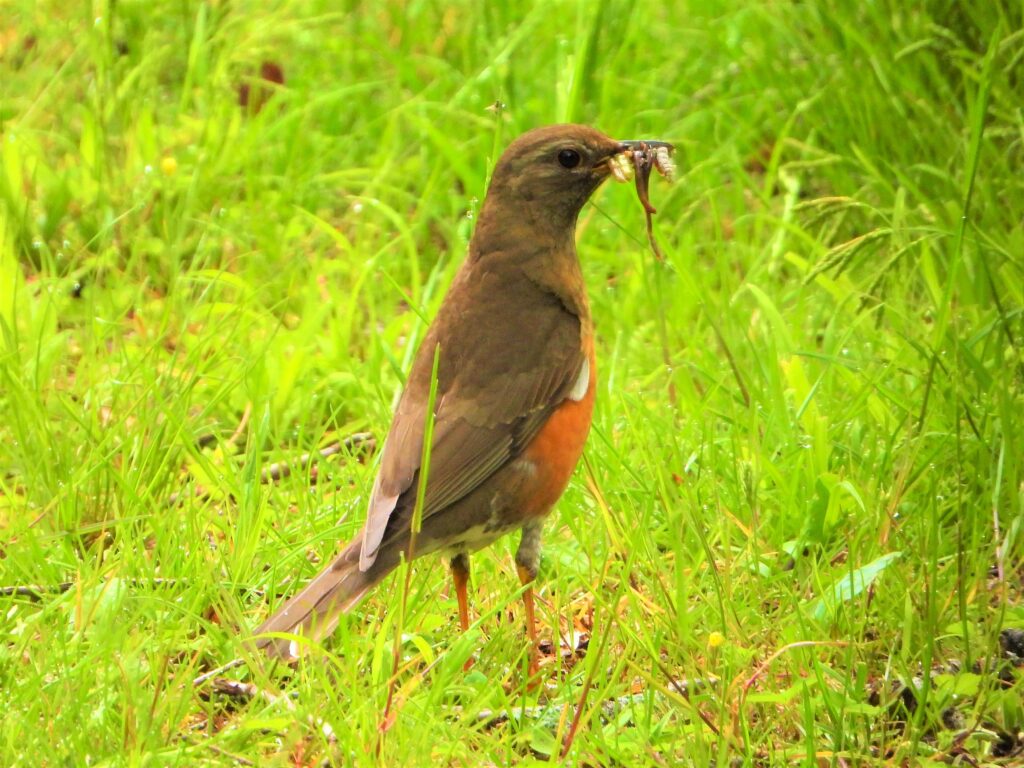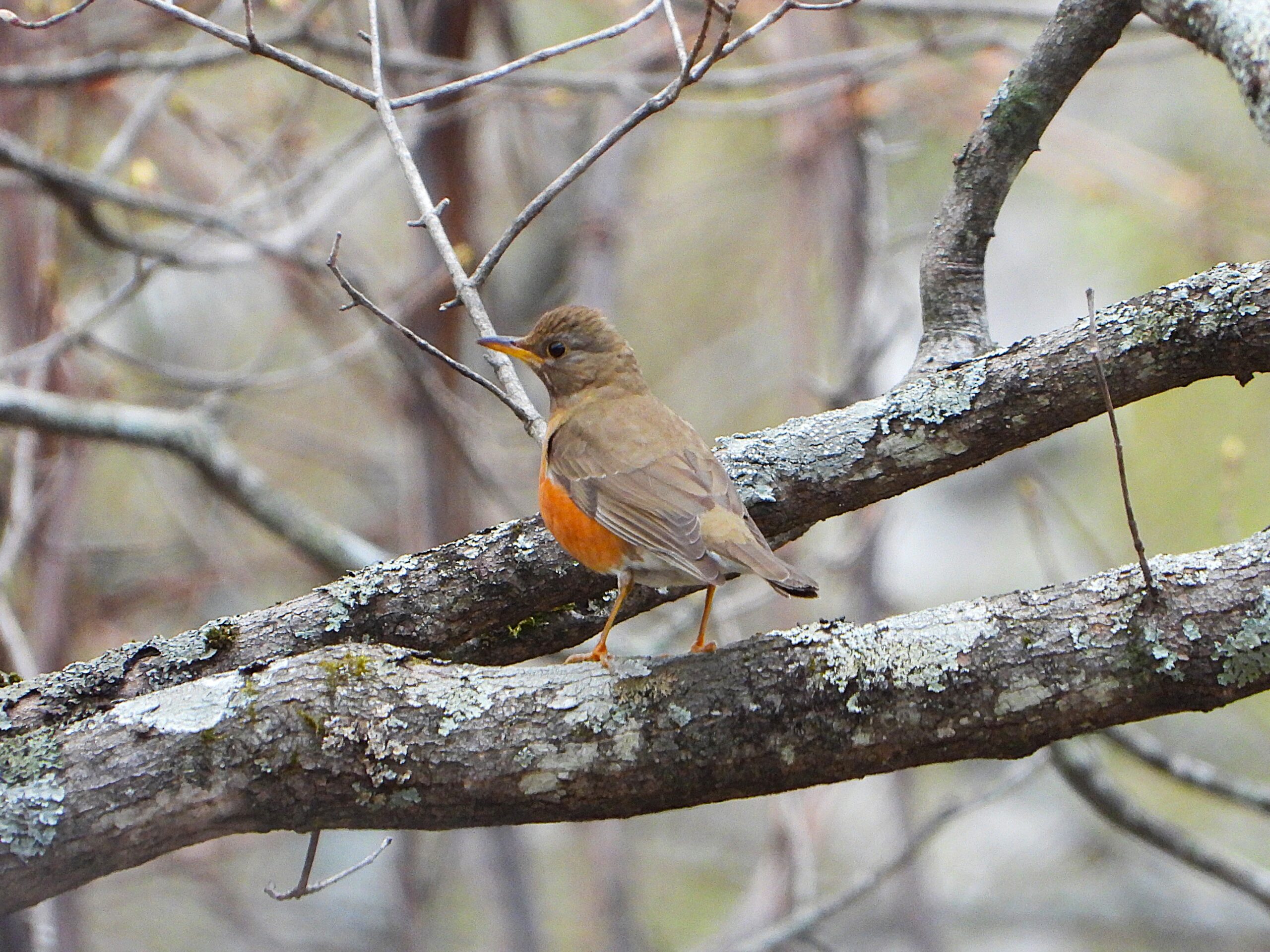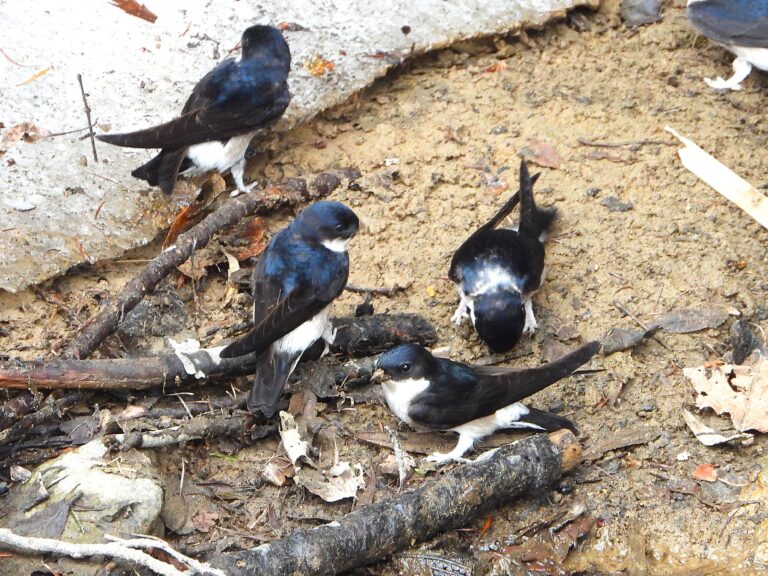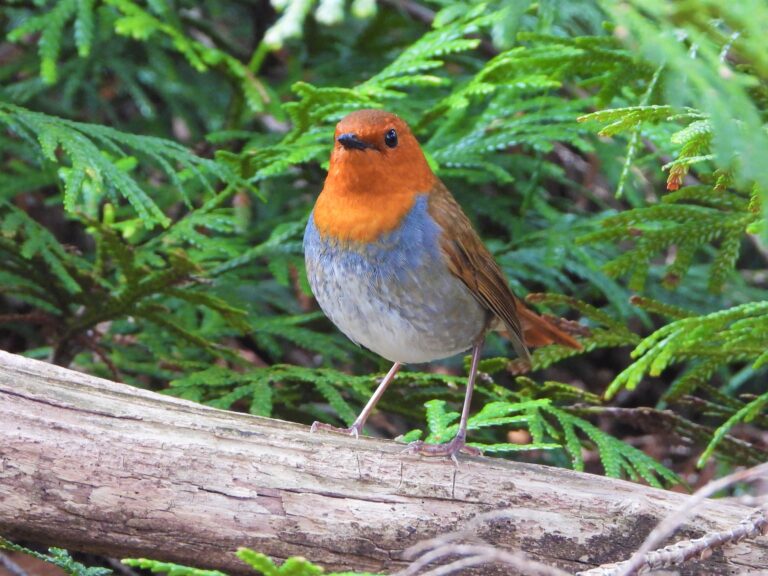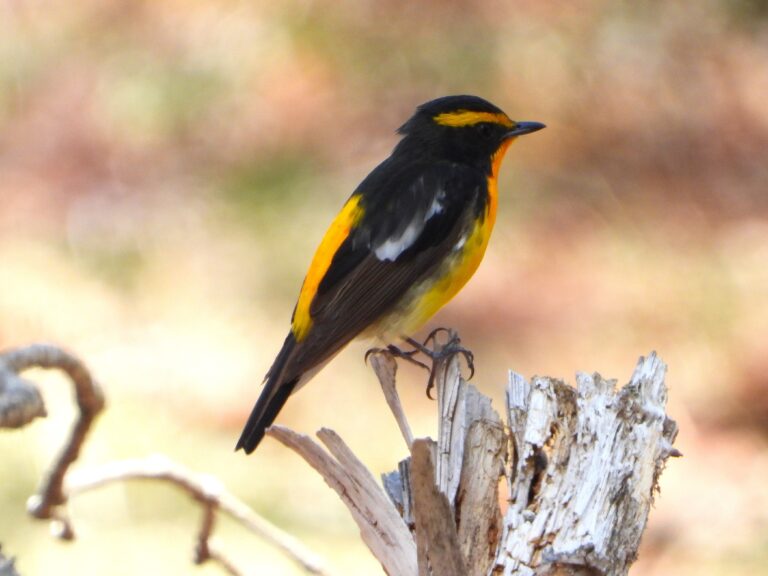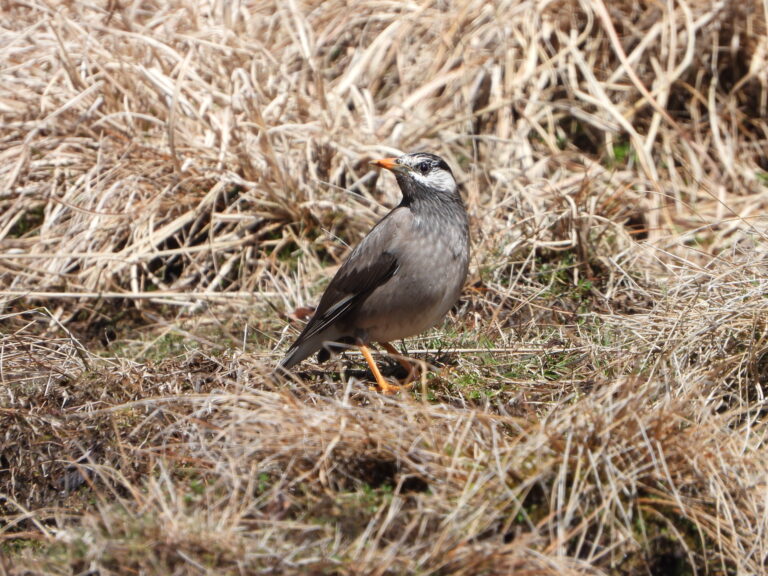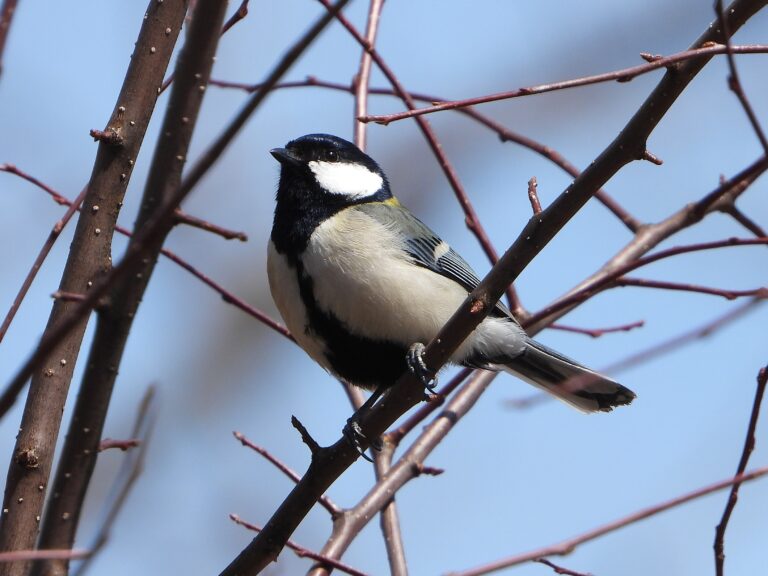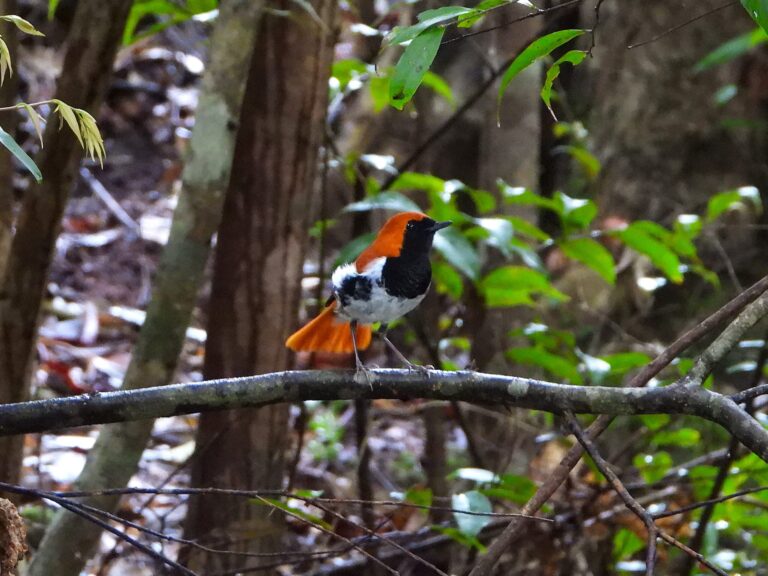Brown-headed Thrush (Turdus chrysolaus) – Wildlife of Japan
Introduction
The Brown-headed Thrush, known as Akahara in Japanese, is a migratory Turdus thrush that breeds mainly in Japan (also Sakhalin and the Kuril Islands) and migrates south for the winter, including to southern Japan, Taiwan, and the northern Philippines.
Appearance
A medium-sized thrush about 24 cm long. Adults have warm brown upperparts and an orange breast and flanks with a whitish belly. Females and juveniles are duller, with a paler and lightly streaked throat.
Habitat & Distribution
Breeds in cool broadleaf and mixed forests—especially beech forests—from northern Honshu to Hokkaido. During winter it moves to lower, milder woodlands and urban parks.
According to eBird and Bird Research data, breeding occurs roughly May–July, and wintering birds appear December–March in central and southern Japan.
Where to See in Japan
- Breeding (May–July): forests of Hokkaido and northern Honshu
- Migration (Mar–May; Oct–Nov): wooded parks and valleys across Honshu
- Winter: lowland woods and city parks mainly south of southern Tohoku (Kanto to Kyushu); recent surveys show increased records along the Sea of Japan coast due to milder winters.
Behavior
A shy ground-forager that turns over leaf litter for insects and worms, quickly hiding when disturbed. Males sing a clear, ringing “kyoron-kyoron-chii” song from forested slopes in spring.
Diet
Eats earthworms, insects, spiders, and in autumn–winter also berries and fruits. Forages mainly on the ground or in low vegetation.
Reproduction
Nesting occurs May–July. The cup-shaped nest of moss and plant fibers is built low in trees or shrubs. Clutch size is 3–5 eggs, and the female incubates for about two weeks; chicks fledge in another two weeks.
Conservation
Listed as Least Concern by the IUCN. Populations remain stable but rely on preservation of natural forests.
Author’s Impression
On quiet mountain trails I usually hear Akahara before I see it—one bright note from the forest, followed by a glimpse of orange feathers among the leaves.
Its song is truly beautiful; when I hear it echoing through the forest, I feel that summer has arrived.
One day, I found a Brown-headed Thrush with its beak completely full of food—perhaps it was about to feed its chicks. That touching scene made me pause and smile.
